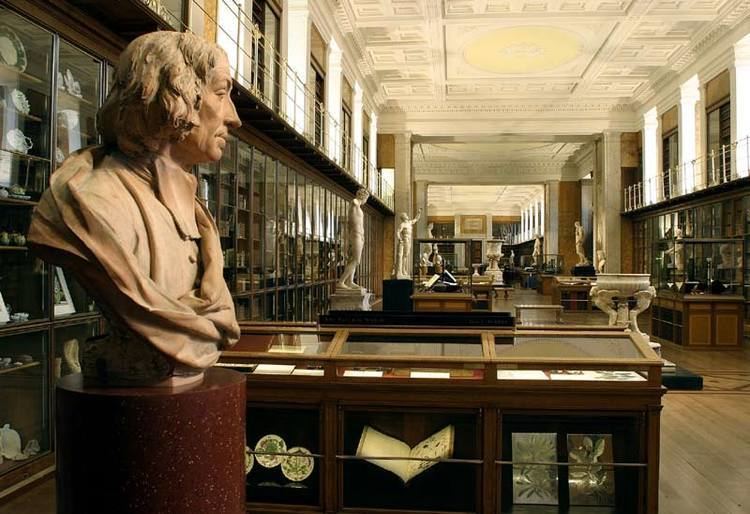 | ||
Museology, or museum studies (also known in older sources as museography), is the study of museums, museum curation, art exhibitions and how museums developed into their institutional role in education through social and political forces. Museologists also organize the display of artifacts in museums; organize exhibitions by choosing the display items; make purchases of rare and new collections for museum enrichment; identify, examine, clean, preserve, display or store art objects; and conduct educational programs and training courses.[1]
Contents
Overview
Museum displays are given meaning and purpose by the context in which they are created and how they are showcased; museology endeavors to discover the catalysts that support the growth of these associations and their success through such efficiencies. The scope of research goes beyond superficial terms, delving further into topics such as audiences to which exhibits are directed, responsibilities encountered by way of function, as well as some deliberation as to possible futures as an institution. The difficulties that are faced by historians and curators to produce a product that appeals to a varied public and can withstand criticism stimulates ongoing research.
Conception of museums
Public museums were created to replace private collections by displaying collected works where the general public could profit from a shared experience. The study of art, artifacts, and every object imaginable was to become more accessible to everyone, a means of discovery and wonder. In origin, the idea dates back to classical times, but publicly funded foundations can only be traced back a few hundred years. The curiosity cabinet is the earliest form of a museum in Western civilization.
Insufficient support
Reasons why this specific scholarly perspective of review has been overlooked may be directly linked with a lack of priority and due to more pressing financial circumstances such as funding and managing collections. These being more practical issues that take precedence have caused a slower infiltration into the mainstream and left many disenchanted with it as a whole. Also, the theme itself is inherently correlated with not just conversation but debate, often leaving the subject at a standstill and experts unsatisfied as so much of it relies on theory instead of hard evidence.
Tourism as a vehicle for success
Museums, as a result of competition and the growing tourism market, face a constant identity crisis and must always remain current in an economy that privileges experiences, immediacy, and what the industry calls adventure. But the booming market plays two roles in the lives of museums and museology. In recent years, there has been tremendous growth in the museum population worldwide; the opportunity created by tourism has left the two intimately linked, but as their relationship grows, so too do concerns as to how to cope with public criticism. A larger audience for museums begs understanding in how to satisfy needs and expectations; museology takes into consideration and studies those public demands and build theories as to why they work and how to duplicate them.
Museum media as a mode of communication
Museums are the quintessential institutions which use ‘medium’ and ‘message’ as an identical thought through material and the tangible. Museology seeks to understand and develop proficient exhibits which engage the audience by way of looking at the past and truly grasping techniques and displays that are productive and how they can be adapted to changing societies and utilized to effectively educate and stir interest, awareness, or curiosity. Both form and function become sources to be analyzed as they allow greater comprehension of an audience’s overall reception of a message. In establishing continuity between museum and media, popular culture, and tourism, museology has taken a transdisciplinary approach broadening discussions and utilizing a wider scope of methodology to explain the inevitable changes which occur.
